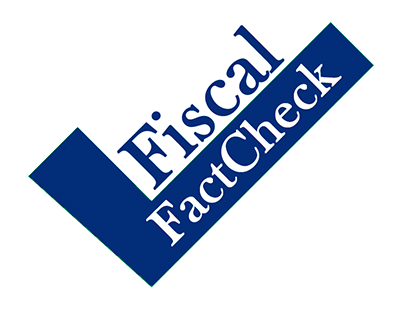Was a "No" Vote on the Budget Deal a Vote for "More Spending"?
In support of the $1.7 trillion Bipartisan Budget Act of 2019 (BBA19), Senator David Perdue (R-GA) gave a floor speech and penned an op-ed arguing that "a no vote" on the bill "actually is a vote to increase spending over time" and that under the BBA19 "discretionary spending continues to fall as a percentage of the [Gross Domestic Product] over the next two years." These statements are generally false and certainly create a misleading picture.
A No Vote on BBA19 Was a Vote for Less Spending, Not More
In fact, a vote against the BBA19 was a vote to avoid the spending increases. This legislation will increase spending over the next two years by about $320 billion above current law* and result in $1.7 trillion additional projected spending over a decade.

Senator Perdue's argument that a "no" vote on the budget deal would increase spending is based mainly on the idea that the alternatives, such as a continuing resolution (CR) or a return to sequester-level spending caps, would be even worse.
It's true that either of these outcomes would be undesirable, but there is little evidence to suggest that either would lead to more spending in the future, and logic suggesting otherwise is largely circular. Moreover, the BBA19 doesn't eliminate the possibility of a CR, and it goes far beyond simply avoiding sequestration: in 2020, it will cost almost twice as much as repealing the sequester.
Senator Perdue's counterfactuals also leave out the most obvious alternative to the BBA19: a responsible cap deal that sets affordable and achievable spending levels and is fully offset elsewhere in the budget. In fact, the Bipartisan Budget Act of 2013 and the Bipartisan Budget Act of 2015 both relied on this strategy, as did our plan to raise the caps without breaking the bank. And to pay for cap increases, all three actually address the part of the budget that Senator Perdue complains "no one is really talking about " – the rising cost of mandatory spending.
BBA19 Will Not Significantly Reduce Spending as a Share of GDP
Senator Perdue is also mistaken in claiming that under the BBA19 "discretionary spending continues to fall as a percentage of the GDP over the next two years as our economy grows." By our estimate, discretionary spending will remain stable as a share of GDP under the BBA19, which means it will increase in inflation-adjusted dollars.
In 2019, CBO projects discretionary outlays will total 6.26 percent of GDP; we estimate that discretionary outlays will be 0.03 percent of GDP higher than that in 2020 and 0.03 percent of GDP lower than that in 2021. Assuming the use of CHIMPs as in past years, 2021 discretionary outlays as a share of GDP will actually be above the 2019 level.**

While Senator Perdue is correct that discretionary spending as a share of GDP has fallen in recent years, saying that it will fall from 8.7 percent of GDP in 2011 to "less than 6 percent" in 2021 under this deal significantly overstates the case. In reality, we project 2021 discretionary spending to be above 6.2 percent of GDP with the BBA19, and 2011 was an unusually high spending year – the second highest over the past quarter-century – driven by economic stimulus measures, high levels of war spending, low GDP that was recovering from a recession, and a spending surge in 2010.
On an apples-to-apples basis, ordinary discretionary spending will have fallen by about 1 percent of GDP between 2011 and 2021, not the more than 2.7 percent suggested by Senator Perdue’s numbers.***
***
Overall, it is simply incorrect to suggest that voting against the BBA19 would result in higher spending and misleading, at best, to suggest that discretionary spending will fall over the two years of the budget deal.
Ruling: Largely False
*Under the BBA2019, budget authority would be $324 billion higher than prior law in FY 2020 and 2021. CBO estimates that over $280 billion of those funds would be spent by the end of 2022 and $319 billion by the end of 2025.
**Beyond 2021, CBO does project discretionary spending to decline as a share of GDP. This is not the result of the budget deal but rather CBO's baseline convention, which assumes future discretionary spending will grow with inflation while the economy grows faster.
***In 2011, ordinary non-war, non-stimulus appropriations totaled 6.7 percent of potential GDP. In 2021, we project they will total 5.7 percent of potential GDP.


